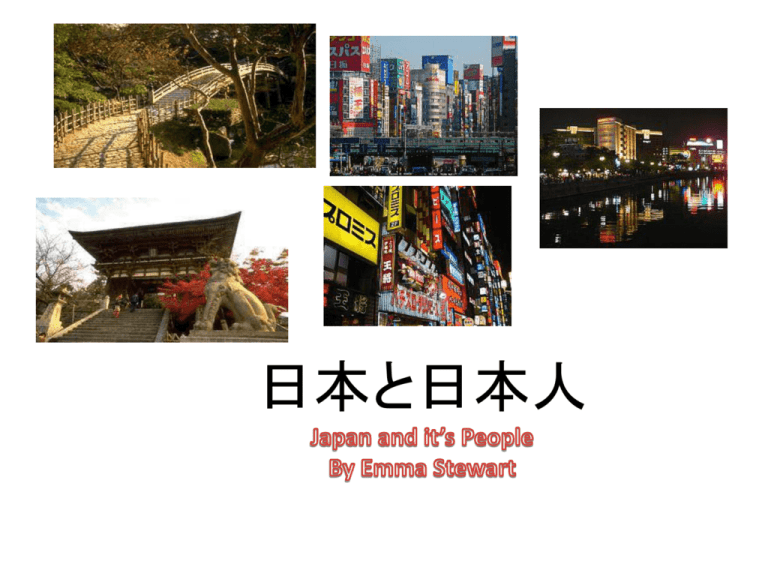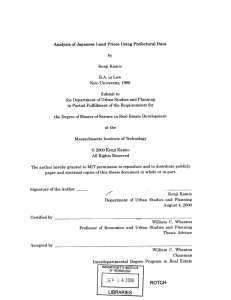Emma Japan - EDF5117-Assessment2-SOSE
advertisement

日本と日本人 The Japanese flag is called Hinomaru (circle of the sun). The red circle on the white background symbolizes the sun. Islands of Japan Main cities of Japan Australia has states but in Japan they don’t have states they have prefectures. Prefectures are the country's sub-national jurisdictions. There are 47 of them. The main cities are: Tokyo, Osaka and Kyoto. Tokyo is the capital city. The population of Japan is 127 million and 99% are Japanese. Some famous Japanese places are below. Mount Fuji in Honshu. Golden Pavilion in Kyoto. Ginza district in Chuo, Tokyo. There is a celebration called Shichigosan (that means 753). Basically all children can do this when they are 3 years old and then boys do it again when they are 5 and girls do it again when they are 7. It is to pray for a long life. Japanese kids don’t get presents at Christmas or on birthdays but they get money on New Years Day. There are other different celebrations including: Tanabata, Setsubun, Hinamats-uri and Children's Day. At Tanabata (means 7th evening) festival, Japanese hang small pieces of paper on bamboo. On these small pieces, wishes are written with all one's heart. Lily before the 753 celebration Japanese food is very healthy. That is the reason that Japanese people live so long. Most kids usually have rice and grilled fish for breakfast . Lunch is rice and vegetables and maybe a little pork or fish or chicken. At school you have to have school lunches, you can’t bring a packed lunch or go home for lunch. You have to eat everything on your plate or you are made to apologize at the end of the meal. Dinner is noodle or Japanese curry. Japanese kids study mainly the same subjects as us but they have to spend a long, long time learning how to read and write because English has one alphabet with 26 letters. Japanese has three alphabets and one of them (kanji) has thousands of different characters that they have to learn by heart. e.g. "Hello Emma, how are you" = こんいちわ エマお元気ですか They have elementary (primary) school for 6 years, then junior high school for 3 years and high school for 3 years. They don’t start school until they are 6 years old so most kids go to kindergarten from age 3 to 6. Study is very important and after school most kids will go to a cram school to study more. Most Japanese 11 years olds spend 9 hours a day studying and that means on Saturday and Sunday too! Thank you Goodbye Good day Cheers How are you Please Good morning Good evening Thank you for a lovely meal Areegato Sayonara Kaneechewa Domo Genkee deska Kudasau Ohio combanwa Gotchi so sama deshta •Japan is 70% mountains. Japan is made up of over 6000 islands. •Japan has about 1,500 earthquakes each year. •Japan’s national anthem, Kimi Ga Yo (君が代), is the oldest in the world. •Three words: "heated toilet seats". •McDonalds employees will run outside to give you your drive-thru order. •It is impolite to tear the wrapping paper off a gift. •It is socially acceptable to pick your nose in public and urinate at the side of the road, but you cannot blow your nose in public. •There is at least one vending machine on every corner. •The sun is red in Japan and the country itself is referred to by Japanese people as "the land of the rising sun" 聞いてくれてありがとう Kiite kurete arigato – Thank You








